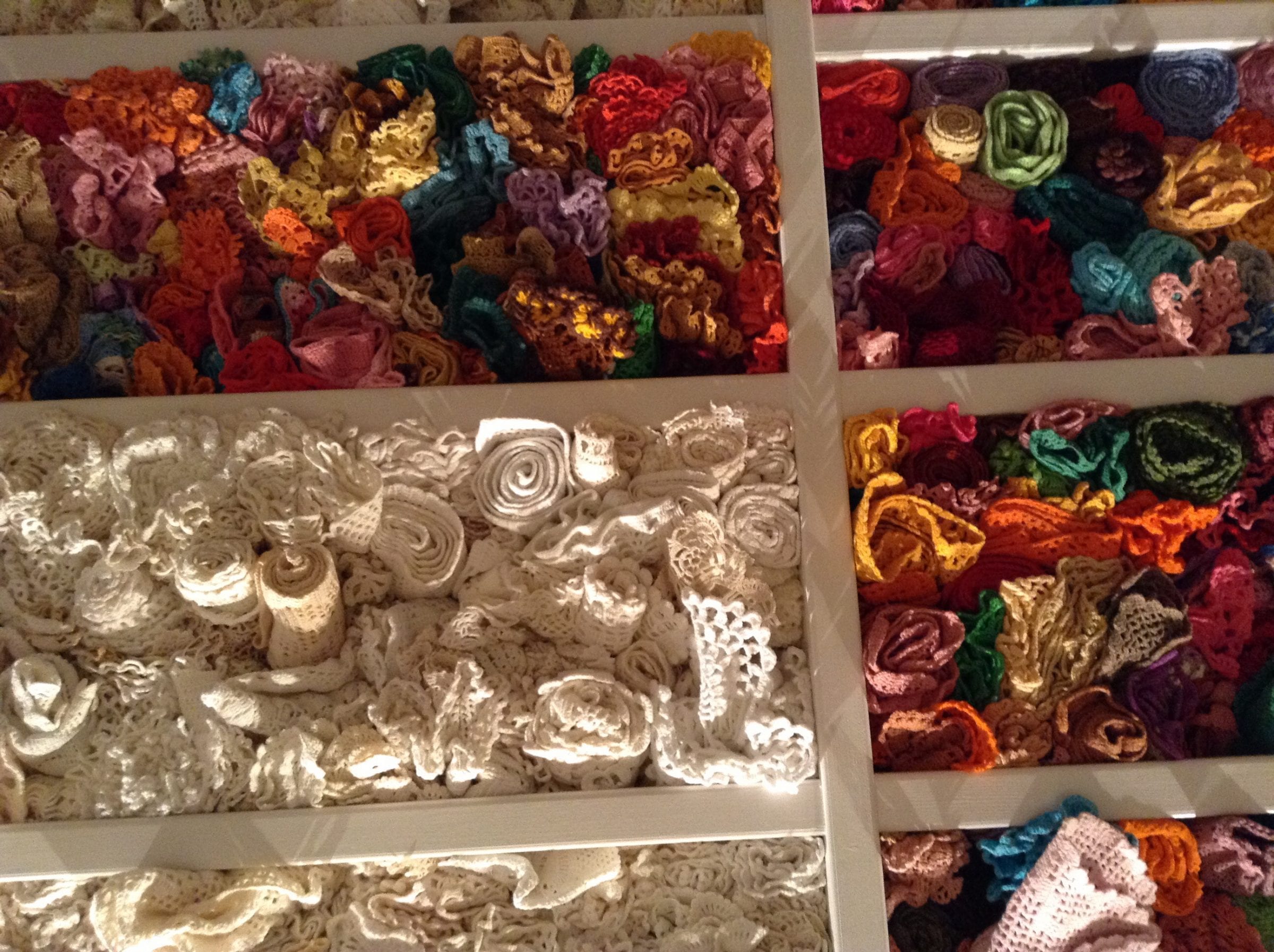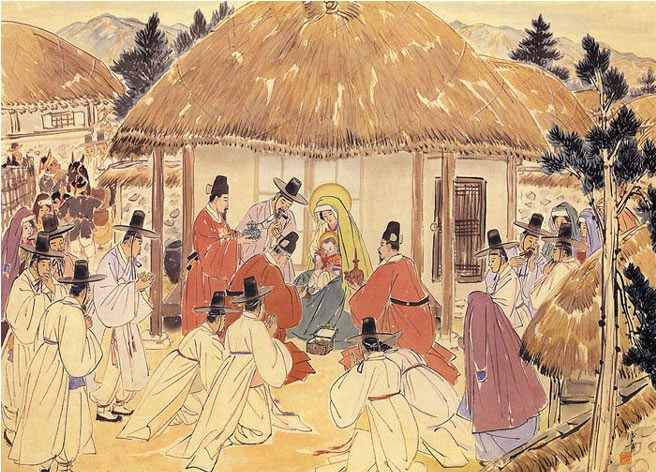Ki-Chang Kim
Ki-Chang Kim was born in Seoul, Korea in 1914. He was deaf and half mute after suffering from typhoid fever at the age of seven. In the 1950’s he was inspired to do religious paintings by a missionary who visited him and a vision he had of himself holding Christ’s dead body and weeping. He hoped to relieve some of the pain himself and his community was feeling from the Korean War by comparing it to the suffering of Jesus. Within one year he completed 30 religious paintings using traditional Indian ink painting. He died in 2001.
Adoration of the Magi
In his Adoration of the Magi, Ki-Chang Kim uses many aspects of Korean culture to depict the story in Matthew and to make it more accessible and offer hope to his people. The painting is done using Indian ink on paper, which is a traditional form of art. It is set with mountains in the background and a village. There are many people surrounding the scene and they are all wearing Hanboks and gats, which were worn by the middle class. These are Kim’s version of the shepherds who came to see Jesus. Although the story says Jesus was born in a manger surrounded by animals, there is only one visible in this scene. Instead there are a lot of people around, and it appears the entire village has come to worship. It helps make it very obvious that they are all wearing traditional Korean clothing and that Jesus is being accepted as King. The three wise men are wearing Samo’s, which are hats reserved for government officials to show their status. They are also wearing red which was considered unacceptable for most people to wear, which lends itself to them being foreigners who may be unaware of the customs of the town they are visiting. The Magi are bearing the traditional gifts mentioned in the story which they brought when King Herod ordered them to come. In this, they are bowing and kneeling before the baby Jesus and offering themselves, accepting him, rather than Herod, as king. Almost everyone in the painting is looking at Jesus and appear to be worshipping him, except for two men who seem to be whispering the good news to each other. Kim did not show the star that supposedly led the wise men to Jesus, but instead put halos and light around Mary and Jesus, making them the light that led the Magi. Making all of the people in his painting Korean lets Kim show others that they are also God’s people and followers of Jesus. Even the Magi, who are foreigners in both the Bible and painting, are accepting Jesus as King. Although the original story is mostly Jews accepting Jesus, anyone can consider him their King and worship him.
Bibliography
Garcia, Cathy Rose A. “Paintings Depict Jesus Christ in Korea.” Koreatimes. July 09, 2008. Accessed December 08, 2016. http://www.koreatimes.co.kr/www/news/art/2008/10/148_27288.html.
“If Jesus Had Been Korean: 20 Rare Paintings of the Life of Christ | ChurchPOP.” ChurchPOP. 2015. Accessed December 08, 2016. https://churchpop.com/2015/06/15/if-jesus-had-been-korean-20-rare-paintings-of-the-life-of-christ/.
Kang, Starr. “Traditional Korean Colors.” Our Everyday Life. Accessed December 08, 2016. http://peopleof.oureverydaylife.com/traditional-korean-colors-8570.html.
“KIM, Ki-Chang (1914 – 2001) :MOU-AK :THE UNESCO WORKS OF ART COLLECTION.” KIM, Ki-Chang (1914 – 2001) :MOU-AK :THE UNESCO WORKS OF ART COLLECTION. Accessed December 08, 2016. http://www.unesco.org/artcollection/NavigationAction.do?idOeuvre=2955.
Korean Culture and Information Service (KOCIS). “Gat, Traditional Headgear in Korea [12].” Gat, Traditional Headgear in Korea [12] :: Korea.net : The Official Website of the Republic of Korea. Accessed December 08, 2016. http://www.korea.net/NewsFocus/Culture/view?articleId=119357.
Rachel Marshall
Class of 2020

